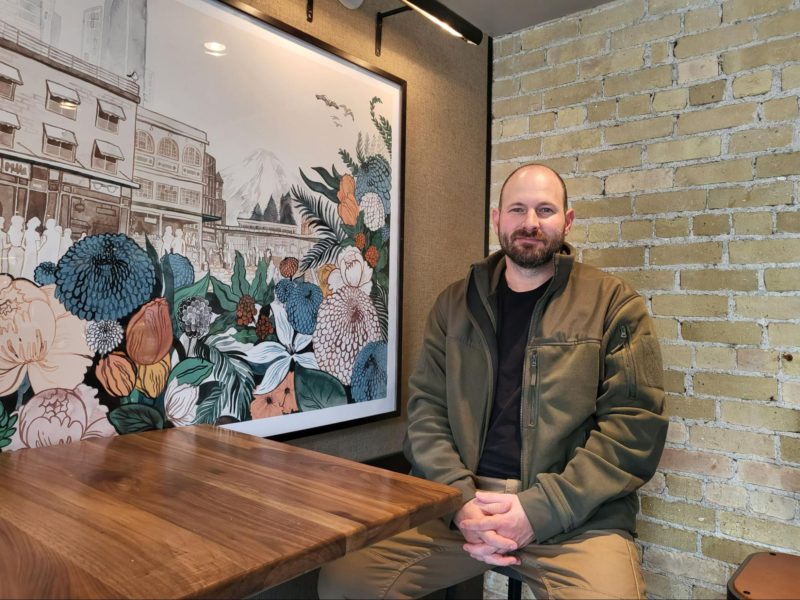Rudy Wilcox, the CEO of RefloDx, was drawn to working in the bio-medical field. After completing his bachelor’s degree, Wilcox worked at Blackrock Neurotech, creating technology to help people with neurological disorders to walk, talk, see, hear, and feel again. This experience encouraged Wilcox to pursue a Master’s in Biomedical Engineering at the University of Utah.
During his work on his master’s degree, a group of clinicians approached Wilcox and his teammates and asked if he could add a microphone to the standard tool that was used to detect gastroesophageal reflux. All the procedures used to detect gastroesophageal reflux are invasive and painful. Upper endoscopy inserts a thin, flexible tube equipped with a light and camera down the patient’s throat, and an ambulatory acid (pH) probe test places a monitor in the patient’s esophagus. The monitor is threaded through the patient’s nose into the esophagus and passes into the patient’s stool after about two days. Another procedure, transnasal esophagoscopy, inserts a thin, flexible tube with a video camera attached through the patient’s nose and moves down the throat into the esophagus. With a 3-year-old at the time, Wilcox could not fathom clinicians using these devices on his child.
Wilcox and his team had an idea to develop GER-detecting technology using ultrasound which would be non-invasive and more affordable to patients. Patients could get tested for GER and get their results back within a week, whereas now they wait up to four months to get tested. To start, Wilcox participated in the “Bench to Bedside” pitch competition at the University of Utah to get funding. He won second place and the People’s Choice award and was awarded $30,000.
After the pitch competition, Wilcox looked into Small Business Innovation Research (SBIR) and Small Business Technology Transfer Research (STTR) funding opportunities to bolster his technology. He applied to SBIR and STTR programs at the National Science Foundation (NSF) and the National Institute of Health (NIH) but was rejected. Wilcox said, “Don’t expect to get funded on the first time. Understand that it will take one to two years to get funded.” When NSF rejected Wilcox, the program director introduced him to the Utah Innovation Center.
Wilcox applied to NSF SBIR Phase I with the help of the Utah Innovation Center and was awarded $225,000. The funding wasn’t enough to build a device to test his hypothesis, so he used off-the-shelf technology. Wilcox faced many regulatory hurdles and couldn’t precisely follow the Phase I plan. This caused his proposal for the NSF SBIR Phase II to be rejected.
NSF advised Wilcox to submit an STTR Phase I proposal with an updated plan based on his experience with the SBIR Phase I. Wilcox was awarded another $225,000. This time, Wilcox worked with the University of Utah to build and test the device.
When Wilcox submitted a proposal for the NSF STTR Phase II, he received excellent reviews from NSF. However, he didn’t have enough money in the bank. His proposal was on the brink of getting rejected due to “business issues.” With the help of the Utah Technology Innovation Funding (UTIF) program, which provides microgrants and nonrecourse loans to support Utah companies in their efforts to develop high-risk technologies, Wilcox was able to have enough funds in his bank account to qualify for the STTR Phase II grant.
Wilcox was awarded $1 million with the NSF STTR Phase II program. The process took work. He had to create a second company to stay financially afloat. But with the help of SBIR and STTR grants, he will be able to put his devices in clinics around Utah and formulate enough data to present to the insurance companies to distribute his devices all around the U.S.
Here are a few tips Wilcox gave regarding the SBIR and STTR programs:
Don’t put all the eggs in one basket
SBIR and STTR grant programs give companies significant opportunities to fund research and development of their technology, but it can take time for the funding to come through. Make sure to have other income streams as you prepare to go down the path of government funding.
Treat SBIR/STTR Programs like it’s a game
There are no set moves that will get you to the end. You never know how others will react. Be ready to change or respond based on that variable.
Be flexible
Always have a strategy, but understand that you might need help to follow that strategy. Be flexible and okay with changing your tactics.
Bring good proposals to the Utah Innovation Center
The Center is good at a lot of things when it comes to SBIR/STTR grant applications. But they are only good if your content and product are good. Make sure to have good ideas to back up the grant proposal.
–Contributed by Bon Lee
